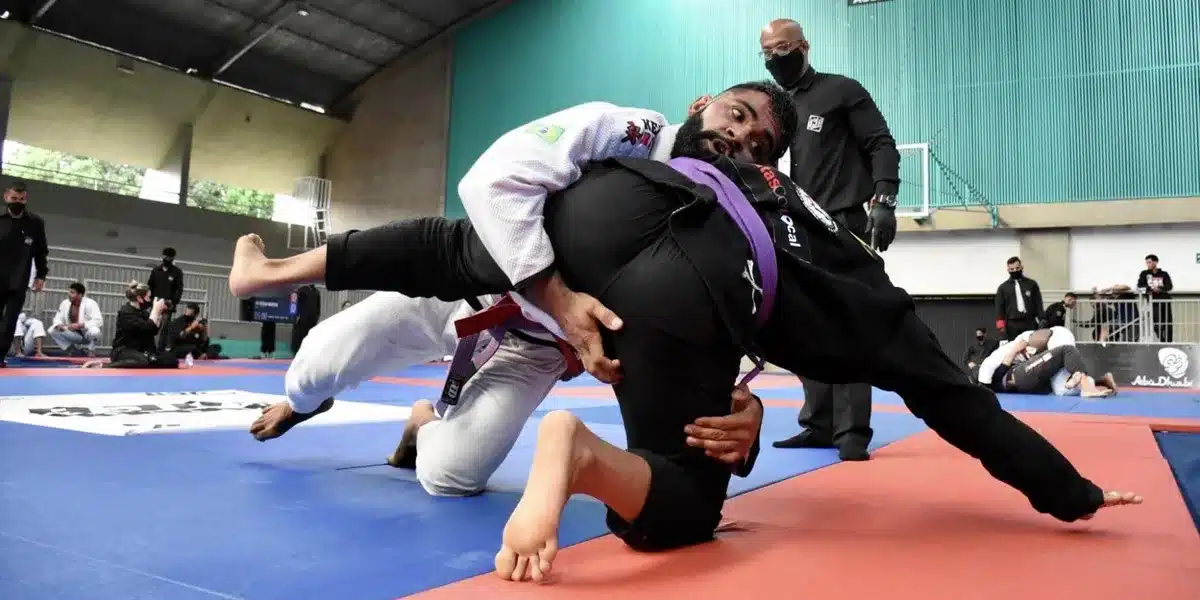Within the rich tapestry of martial arts, Brazilian Jiu-Jitsu holds a special place. Sergio De Lima, a Brazilian Jiu Jitsu athlete, holds a Brown Belt and trains under Professor Cobrinha In Los Angeles. Has competed many major and international tournaments in the world and won many regional and state tournaments as well, with podiums on the biggest federations (AJP Abu Dhabi Jiu Jitsu Pro) and (IBJJF International Brazilian Jiu Jitsu Federation).
According to de Lima, Jiu-Jitsu is not just a martial art—it’s a way of life that opens doors to personal growth and physical development. Many harbor the misconception that it’s too late to start grappling later in life, or that one must be physically fit to even begin training. This is not the case. In fact, Jiu-Jitsu welcomes individuals of all ages and fitness levels, making it a martial art for everyone.
Jiu-Jitsu offers practitioners an advantage that other forms of grappling don’t provide. Furthermore, Jiu-Jitsu is growing more popular each year, attracting individuals of all genders and age groups, from ambitious teenagers to eager adults over 40.
The path to mastery in Jiu-Jitsu begins with the right guidance. Renowned trainers work closely with their students, assessing their fitness levels and providing tailored instructions. This approach facilitates a steady, personal progression from solitary movements to basic defense, eventually leading to engaging in a fight.

Sourced photo
Jiu-Jitsu has safety at its heart, especially during training. Coaches carefully match participants based on their training level and weight category to ensure that every spar is both safe and productive. This aspect of the sport guarantees that participants avoid common injuries like broken noses or concussions, as blows are forbidden in Jiu-Jitsu.
Regular participation in training sessions is key to progress. With a minimum of three sessions a week, the body swiftly adapts to the rigors of the sport, keeping the risk of injury at a minimum. Over time, practitioners notice improvements in their physical strength, agility, and overall confidence.
Jiu-Jitsu is more than just a means to physical fitness; it is also an effective way to build mental resilience. Regularly training helps shed extra pounds and develop harmonious muscle tone. Rather than striving for a bodybuilder’s physique, participants work towards achieving a lean, agile body capable of complex maneuvers.
Aside from physical strength, Jiu-Jitsu training enhances flexibility and coordination. To excel at this martial art, control over one’s body is crucial. With guidance from skilled coaches, individuals learn to perform basic acrobatics and special movements, making them more agile and poised.

Sourced photo
Another beautiful aspect of Jiu-Jitsu is the camaraderie it fosters. Trainees commonly note that the sport serves as an excellent outlet to release stress and feel invigorated, particularly after a long day. Moreover, it introduces practitioners to a diverse range of individuals, fostering friendships that extend beyond the mat.
De Lima believes Jiu-Jitsu can bring brightness into one’s life. Training camps, attestations, and competitions offer opportunities to forge stronger bonds within the team. Furthermore, the inclusive culture of Jiu-Jitsu embraces individuals from all walks of life, from IT specialists and pilots to entrepreneurs and directors.
In the grand arena of martial arts, Jiu-Jitsu stands out not only for its unique grappling techniques but also for its ability to foster personal growth, physical fitness, and community. It is a harmonious blend of cardio, strength training, and acrobatics, delivered in a manner that keeps practitioners engaged and eager for more. Regardless of your age, gender, or fitness level, Jiu-Jitsu invites you to learn, grow, and transform. And who knows? Like Sergio de Lima, you may find your strength in it too.

Sourced photo

